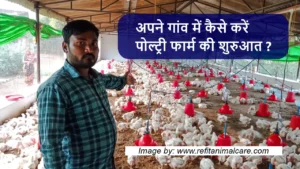Bluetongue is a viral disease spread by insects that infects sheep, cattle, deer, goats, and camelids (camels, llamas, alpacas, guanacos, and vicuas). While sheep are the most seriously affected, cattle are the virus’s primary mammalian reservoir and play an important role in disease epidemiology. Only insect vectors spread the disease, which is non-contagious (midges of the Culicoides species). The disease is caused by a virus from the Reoviridae family. The bluetongue virus is a disease that must be reported in several countries.

Which animal species sometimes has a blue tongue?
Many domestic and wild ruminants are infected with the bluetongue virus. The disease is most commonly present in sheep, but it can also be found in goats and cattle. Wild ruminants, such as whitetailed deer, pronghorn, and desert bighorn sheep, may also develop severe disease.
What causes bluetongue?
Biting midges are the insects that transmit the bluetongue virus (Culicoides spp.). (A vector.) Ticks and sheep keds are examples of biting insects that can spread the virus. Bluetongue is not infectious and is not transmitted by animal touch. However, infected items (fomites), such as surgical instruments and needles, can spread the virus. The bluetongue virus may be passed from the dam to the foetus during pregnancy. Although the virus is present in sperm, sexual transmission does not appear to be a common mode of infection.
Blue tongue symptoms in sheep and cattle
| SHEEP | CATTLE |
| 1. Eye and nasal discharges 2. Drooling 3. High body temperature 4. Swelling in mouth, head and neck 5. Respiratory problems 6. Lethargy 7. Haemorrages into or under skin |
1. Nasal discharge |

Disease control measures
The goal is to contain the outbreak while mitigating the effects on trade. Among the activities are:
- Animal movement restrictions if BTV is suspected
- Laboratory examinations are used to validate suspicious cases.
- Zoning is used to differentiate between contaminated and disease-free regions.
- Vaccination of animals at risk
- Surveillance to see how far the virus and its vectors have spread.
- Control and surveillance techniques for vectors
Diagnosis of blue tongue
The first move if you suspect BTV in your herd is to contact your veterinarian. Working with your veterinarian, collect blood samples from animals for diagnostic testing to confirm if they are contaminated with BTV is the next move. Since there are at least 26 different serotypes of BTV (with the possibility of more being discovered), having a single test that can identify all of these viruses is critical. If BTV is verified, the next step is to serotype the strain so that the correct vaccine can be administered.
Real-time polymerase chain reaction (qPCR) detection tools can determine if BTV is present in the herd and classify unique genotypes quickly and accurately.
Virus diversity must be closely monitored, and diagnostic test tools’ ability to identify new variants must be checked on a regular basis. Collaboration with national reference institutes is required to track virus sequences on a regular basis and, if necessary, upgrade diagnostic tools.
Can humans get bluetongue disease?
No, Bluetongue does not pose a substantial health risk to humans.










